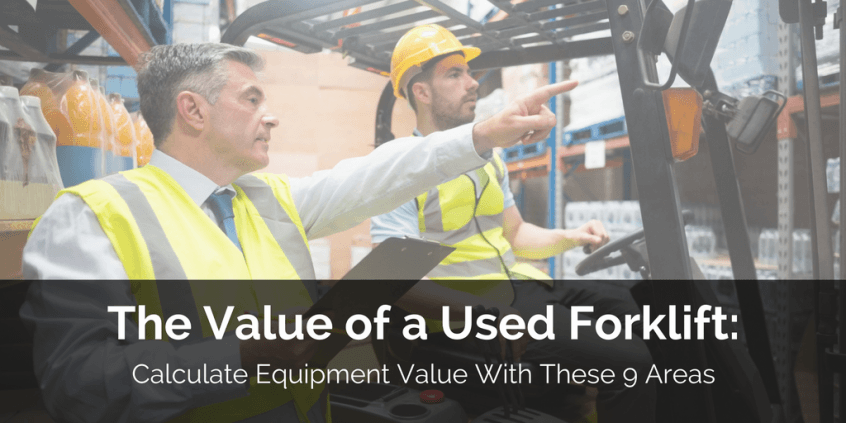Forklifts are indispensable assets in many operations, but like all machinery, they have a finite lifespan. Over time, a once-reliable forklift may spend more hours in the repair shop than on the job, leading to decreased productivity. When this happens, trading in your forklift for a newer model becomes a practical solution. However, to maximize your forklift’s trade-in value, it’s essential to understand the factors that influence its worth and take proactive steps to enhance its appeal.
As a business owner and seller, chances are you want to be able to trade in your forklift or fleet for better equipment or make a small profit from your initial purchase. Whatever your reason is for retiring the equipment, there are a few things to consider, though, when it comes to selling your forklift. We’ve picked nine important areas to cover that help determine the trade-in value of a lift truck:
Key Factors Influencing Forklift Trade-In Value
1. Age and Operating Hours
The age of your forklift and the total hours it has operated are primary determinants of its trade-in value. Forklifts with fewer than 10,000 hours or those under seven years old typically retain higher value. Beyond these thresholds, the value tends to decline significantly.
2. Maintenance History
A well-documented maintenance history can significantly boost your forklift’s value. Regular servicing by certified technicians ensures optimal performance and signals to potential buyers that the equipment has been well cared for.
3. Fuel Type
The forklift’s fuel type influences its desirability. While propane and diesel forklifts are common, electric forklifts with well-maintained batteries often fetch higher trade-in values due to their lower operating costs and environmental benefits.
4. Mast Specifications and Attachments
Forklifts equipped with versatile mast configurations and popular attachments, such as side shifters or fork positioners, can command higher trade-in prices. However, it’s essential to note that certain attachments might reduce the forklift’s maximum load capacity.
5. Appearance and Condition
First impressions matter. A forklift that appears well-maintained, free from significant dents or scratches, and is clean can positively influence trade-in evaluations.
6. Operating Environment
Forklifts primarily used indoors in controlled environments often have less wear and tear compared to those used outdoors or in harsh conditions, positively impacting their trade-in value.
7. Battery and Charger (For Electric Forklifts)
If your forklift is electric, the condition of the battery and the inclusion of a charger are key factors. Batteries with a strong charge cycle and reliable performance add value, while worn-out batteries can lower the trade-in offer.
8. Location and Accessibility
For logistical purposes, the ease of pickup matters. If the forklift is located in an easily accessible area with a loading dock, it simplifies the trade-in process and can make the deal more appealing.
Tips to Maximize Your Forklift’s Trade-In Value
Invest in Regular Preventative Maintenance
Routine checks and timely repairs not only extend the lifespan of your forklift but also enhance its resale value. Keeping detailed maintenance records provides transparency and builds trust with potential buyers.
Present a Clean and Well-Maintained Appearance
Before initiating a trade-in, thoroughly clean your forklift, address minor cosmetic damages, and ensure it’s free from personal items. A well-presented forklift reflects positively during evaluations.
Organize and Provide Comprehensive Documentation
Gather all relevant documents, including proof of ownership, purchase receipts, warranty papers, and detailed maintenance logs. Comprehensive documentation can streamline the appraisal process and potentially enhance the trade-in offer.
Research Current Market Values
Understanding the current market value of your forklift model equips you with the knowledge to negotiate effectively and set realistic expectations.
Highlight Valuable Features and Upgrades
If your forklift has desirable features or recent upgrades, such as new tires or advanced attachments, ensure these are communicated during the trade-in process to justify a higher valuation.
There you have it! By focusing on these factors and implementing the suggested strategies, you can significantly enhance your forklift’s trade-in value, ensuring a smoother transition to newer equipment and optimizing your operational efficiency. If you’re ready to trade in your forklift or need expert guidance, contact us today!

